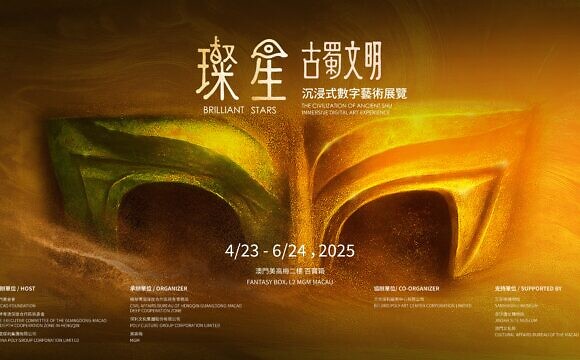The prestigious Kyoto Global Design Awards recognize groundbreaking design with a focus on sustainability and societal impact
Bali, Indonesia (November 13, 2024) – SAKA Museum, AYANA Bali’s innovative cultural hub and knowledge center committed to preserving and promoting the island’s vibrant living heritage, has been named among the Top 100 in this year’s Kyoto Global Design Awards. The museum’s interior designers, Napp Studio & Architects, were recognized in the Environmental Design category, which emphasizes a project’s harmonious integration with its natural surroundings. The honor comes just three months after SAKA Museum was included in Time Magazine’s World’s Greatest Places 2024.
The Kyoto Global Design Awards recognize excellence across diverse design fields, spotlighting projects that excel in both aesthetics and environmental responsibility. Hong Kong-based Napp Studio & Architects designed SAKA Museum – their biggest project to date – to reflect Bali’s distinct spiritual and cultural landscape with a state-of-the-art approach. Their captivating interior translates traditional Balinese Hindu philosophies and motifs with a contemporary yet timeless appeal, which speaks to both local and international audiences across generations.
Co-founders Aron Tsang and Wesley Ho drew on Nyepi, the island’s annual Day of Silence, to guide visitors through a serene, introspective experience. The museum’s lobby features a dark, subtly lit ceiling resembling the constellations of Bali’s night sky. The space transitions to a soft glow at sunset, when 3,000 LED lights begin to twinkle, an effect achieved through a carefully arranged grid of lights that ingeniously conceals structural elements and fixtures.
Napp Studio & Architects maximized the use of local materials such as gray granite flooring and volcanic rock to harmonize with Bali’s natural landscape, reduce the project’s environmental footprint, and strengthen ties to the community. “Our design aimed to capture the essence of Nyepi, using lighting, local materials, and a color palette that invites calm reflection, forming spaces that aren’t fixed but are open to personal interpretation," said the studio’s co-founders.
“We’ve received numerous industry awards for our individual concepts, but this is the first time we’ve received recognition for environmental design, which demonstrates that our approach to sustainability and incorporating local elements is on the right track," they continued.
Meanwhile, SAKA Museum’s Knowledge Center, a resource and artifact hub for conservationists, artists, researchers and students, was designed in a warmer palette evoking a wooden chest. The only one of its kind on the island, the Knowledge Center strengthens AYANA Bali’s mission of celebrating Bali’s cultural identity and encouraging deeper engagement with all its aspects in a modern environment.
Reflecting on SAKA Museum’s recognition at the Kyoto Global Design Awards, Judith Bosnak, Director of SAKA Museum, expressed gratitude for Napp Studio’s dedication to creating an exceptional cultural experience rooted in authenticity and environmental awareness. “SAKA Museum has truly become a place of cultural pride and inspiration for Bali, and we thank Napp Studio for their deeply thoughtful and skillful design," she said.
“This recognition celebrates the ingenuity of our entire SAKA Museum team, while also underscoring the profound importance of sustainable, accessible, and cutting-edge venues for cultural learning," she continued.
“SAKA Museum’s prestigious international accolades in its inaugural year are testament to its significance as one of Indonesia’s foremost cultural institutions. We hope to inspire others to embrace innovative, inclusive, and sustainable design in Indonesia while encouraging visitors to engage deeply with Bali’s past, present, and future through our immersive cultural experience."
SAKA Museum looks forward to opening new exhibitions in January 2025, including an immersive Nyepi experience, a heritage gallery devoted to Balinese material art, an exhibition exploring the UNESCO-recognized Subak agriculture system, and an exposition around Nyepi ceremonies.








